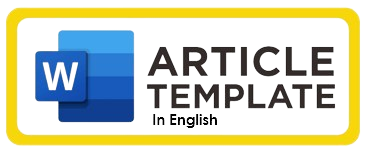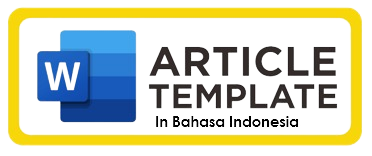Implementing the Cooperative Learning Model with LCD Projector Media to Improve Elementary School Students’ Learning Outcomes
DOI:
https://doi.org/10.64420/jippg.v2i1.248Keywords:
Student Learning Outcomes, Cooperative Learning Model, LCD Projector Media, Learning OutcomesAbstract
Background: In the current era of educational technology, integrating interactive media with effective learning models is essential to enhance student engagement and performance, particularly in primary education. Objective: The purpose of this study was to determine the improvement of elementary school students' learning outcomes using the Cooperative Learning model using LCD Projector Media. Methods: This research used the Classroom Action Research method. The sample of this study was grade V students, with a total of 15 students. Data collection using observation, interviews, tests, and documentation. Analysis using qualitative analysis and quantitative analysis. Results: There is an increase in student learning outcomes using a cooperative learning model assisted by LCD projector media in Islamic religious education subjects at SDN 58 Bengkulu Selatan. This improvement can be seen from the pre-cycle data, cycles I and II; each cycle has increased. Conclusion: The combination of the cooperative learning model and LCD projector media is an effective strategy for improving the learning outcomes of elementary school students. Contribution: This research provides more effective learning alternatives by combining cooperative learning models and LCD projector media
References
Dewantara, A. H., Amir, B., & Harnida, H. (2021). Kreativitas Guru Dalam Memanfaatkan Media Berbasis It Ditinjau Dari Gaya Belajar Siswa. AL-GURFAH: Journal of Primary Education, 1(1), 15-28. https://jurnal.iain-bone.ac.id/index.php/algurfah/article/view/1039
Dolong, M. J. (2016). Sudut pandang perencanaan dalam pengembangan pembelajaran. Inspiratif Pendidikan, 5(1), 65-76. https://doi.org/10.24252/ip.v5i1.3213
Elihami, E., & Syahid, A. (2018). Penerapan pembelajaran pendidikan agama islam dalam membentuk karakter pribadi yang islami. Edumaspul: Jurnal Pendidikan, 2(1), 79-96. https://ummaspul.e-journal.id/maspuljr/article/view/17
Hakim, A. R., & Windayana, H. (2016). Pengaruh penggunaan multimedia interaktif dalam pembelajaran matematika untuk meningkatkan hasil belajar siswa SD. EduHumaniora| Jurnal Pendidikan Dasar Kampus Cibiru, 4(2). https://ejournal.upi.edu/index.php/eduhumaniora/article/view/2827
Khoiruddin, H., & Kustiani, A. W. (2020). Manajemen Pembelajaran Tahsin Al-Quran Berbasis Metode Tilawati. Jurnal Isema: Islamic Educational Management, 5(1), 55-68. https://doi.org/10.15575/isema.v5i1.5546
Kholidah, L. N. (2015). Pola integrasi nilai-nilai keislaman dalam pembelajaran pendidikan agama Islam pada lembaga pendidikan. At-Ta'dib, 10(2). https://doi.org/10.21111/at-tadib.v10i2.459
Lopes, J. B., & Cunha, A. E. (2017). Self-directed professional development to improve effective teaching: Key points for a model. Teaching and Teacher Education, 68, 262-274. https://doi.org/10.1016/j.tate.2017.09.009
Meilani, L., Bastulbar, B., & Pratiwi, W. D. (2021). Dampak Pembelajaran Jarak Jauh Terhadap Aspek Kognitif, Afektif, dan Psikomotor Bagi Siswa Sekolah Menengah Atas (SMA). Jurnal Pendidikan Bahasa dan Sastra Indonesia Undiksha, 11(3), 282-287. https://doi.org/10.23887/jjpbs.v11i3.31476
Muthoharoh, M. (2019). Media powerpoint dalam pembelajaran. Tasyri: Jurnal Tarbiyah-Syariah-Islamiyah, 26(1), 21-32. https://ejournal.kopertais4.or.id/pantura/index.php/tasyri/article/view/3398
Rahman, T. (2018). Aplikasi model-model pembelajaran dalam penelitian tindakan kelas. CV. Pilar Nusantara.
Safitri, A. O., Yunianti, V. D., & Rostika, D. (2022). Upaya peningkatan pendidikan berkualitas di Indonesia: Analisis pencapaian sustainable development goals (SDGs). Jurnal Basicedu, 6(4), 7096-7106. https://doi.org/10.31004/basicedu.v6i4.3296
Sanjaya, P. (2019). Pentingnya Sinergitas Keluarga Dengan Sekolah Melaksanakan Strategi Dalam Pembelajaran. Widyacarya: Jurnal Pendidikan, Agama dan Budaya, 2(2), 34-41. https://doi.org/10.55115/widyacarya.v2i2.97
Santoso, H. B., & Subagyo, S. (2017). Peningkatan Aktifitas Dan Hasil Belajar Dengan Metode Problem Basic Learning (PBL) Pada Mata Pelajaran Tune Up Motor Bensin Siswa Kelas XI Di SMK Insan Cendekia Turi Sleman Tahun Ajaran 2015/2016. Jurnal Taman Vokasi, 5(1), 40-45. https://doi.org/10.30738/jtv.v5i1.1428
Suardi, M. (2018). Belajar & pembelajaran. Deepublish.
Surohim, S. (2021). Pengembangan Pembelajaran Pendidikan Agam Islam Melalui Pendekatan Interdisipliner Di Sekolah Menengah Atas (Sma). EL-TA'DIB (Journal of Islamic Education), 1(2). http://jurnal.umb.ac.id/index.php/eltadib/article/view/3105
Tegeh, I. M., Simamora, A. H., & Dwipayana, K. (2019). Pengembangan Media Video Pembelajaran Dengan Model Pengembangan 4D Pada Mata Pelajaran Agama Hindu. Mimbar Ilmu, 24(2), 158-166. https://doi.org/10.23887/mi.v24i2.21262
Utomo, P., Asvio, N., & Prayogi, F. (2024). Metode Penelitian Tindakan Kelas (PTK): Panduan Praktis untuk Guru dan Mahasiswa di Institusi Pendidikan. Pubmedia Jurnal Penelitian Tindakan Kelas Indonesia, 1(4), 19. https://doi.org/10.47134/ptk.v1i4.821
Wahid, A. H., Muali, C., & Mutmainnah, M. (2018). Manajemen Kelas Dalam Menciptakan Suasana Belajar Yang Kondusif; Upaya Peningkatan Prestasi Belajar Siswa. Al-Fikrah: Jurnal Manajemen Pendidikan, 5(2), 179-194. http://dx.doi.org/10.31958/jaf.v5i2.1106
Wahyuningsih, E. S. (2020). Model pembelajaran mastery learning upaya peningkatan keaktifan dan hasil belajar siswa. Deepublish.
Wulandari, I., & Kunci, K. (2022). Model Pembelajaran Kooperatif Tipe STAD (Student Teams Achievement Division) dalam Pembelajaran MI. Jurnal papeda, 4(1). https://unimuda.e-journal.id/jurnalpendidikandasar/article/view/1754
Downloads
Published
How to Cite
Issue
Section
License
Copyright (c) 2025 Yayik Oktana, Muhammad Hidayaturrahman

This work is licensed under a Creative Commons Attribution-ShareAlike 4.0 International License.
Authors who publish with this journal agree to the following terms: (1) Authors retain copyright and grant the journal right of first publication with the work simultaneously licensed under a Creative Commons Attribution-ShareAlike 4.0 International. that allows others to share the work with an acknowledgement of the work's authorship and initial publication in this journal; (2) Authors are able to enter into separate, additional contractual arrangements for the non-exclusive distribution of the journal's published version of the work (e.g., post it to an institutional repository or publish it in a book), with an acknowledgement of its initial publication in this journal; (3) Authors are permitted and encouraged to post their work online (e.g., in institutional repositories or on their website) prior to and during the submission process, as it can lead to productive exchanges, as well as earlier and greater citation of published work.




